
A bird’s wingspan refers to the length of one tip of its wing to the other. The longer the wingspan, the greater the distance a bird can fly. It also lets them fly easier, by letting them glide on the wind with minimum effort. Here we have the top 20 contenders for the title of the bird with the longest wingspan in the world.
Wandering Albatross – 3.7 meters

Also known as the snowy albatross, the white-winged albatross, and the goonie, this bird has a wingspan of up to 3.7 meters long. This makes it the bird with the unquestionably longest wingspan in the entire world. Their long wings allow them to fly long distances without getting tired, particularly by letting them glide on ocean breezes. This led to the birds being described as unmoving even as they fly across the sky. Scientists that tracked their flight patterns discovered that they can circumnavigate the Southern Ocean up to three times in a single year.
Contrary to popular belief, the wandering albatross is not purely white. Juveniles of the species feature a chocolate brown color that changes as they mature. Adults of the species have white feathers on their bodies and most of their wings. Their wingtips and edges make up the exceptions, having a black color instead.
Marabou Stork – 3.7 meters
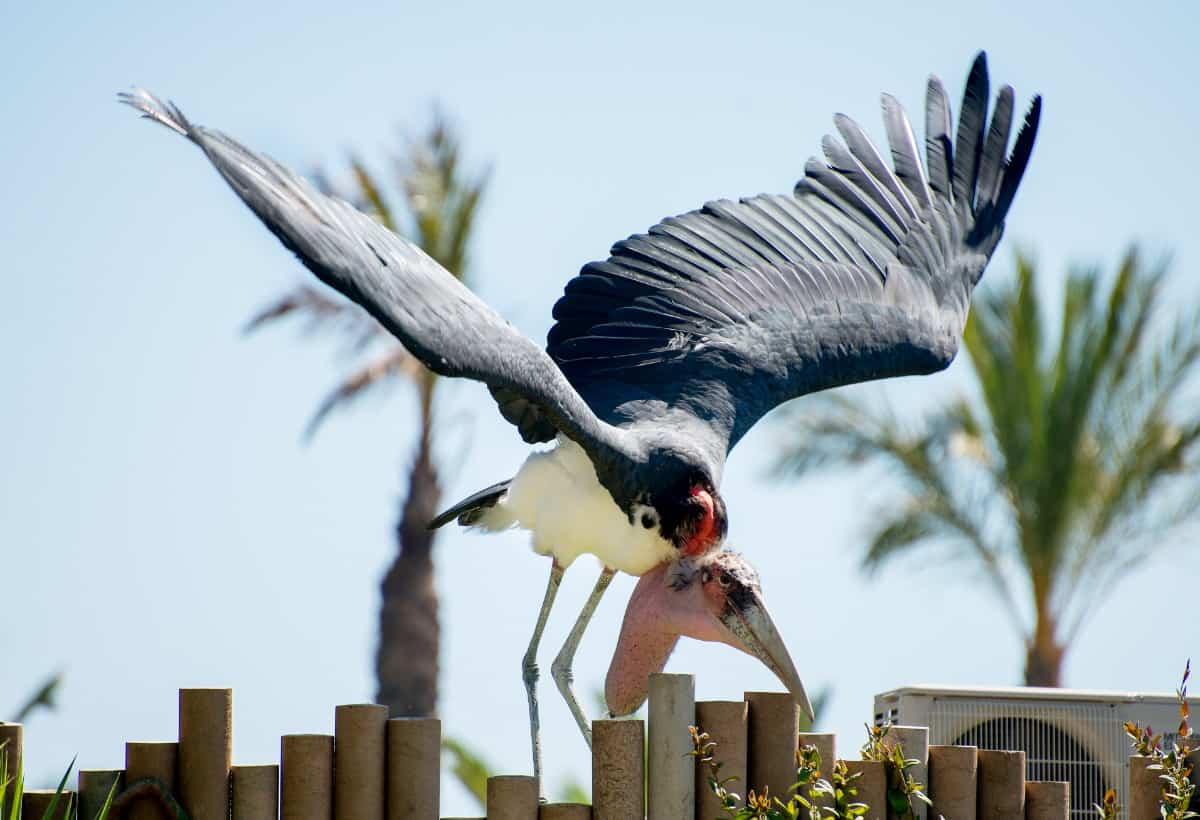
Also known as the undertaker bird, this bird has a wingspan of 3.7 meters, rivaling the wandering albatross. This makes the Marabou stork the largest land bird in the whole world, at least in terms of wingspan. It also gives them a wide range, with the Marabou stork widespread across the entirety of sub-Saharan Africa.
The bird’s nickname references its appearance from behind — its wings giving the appearance of a cloak draped over a man stooped over a grave. This is further reinforced by the black feathers on the bird’s wings and back, although it has white feathers on the rest of its body. The bird does have a bald head and neck, with the latter featuring a ring of white feathers around the base. Juveniles of the species also have brown feathers instead of black, which darken as they age.
Great White Pelican – 3.6 meters
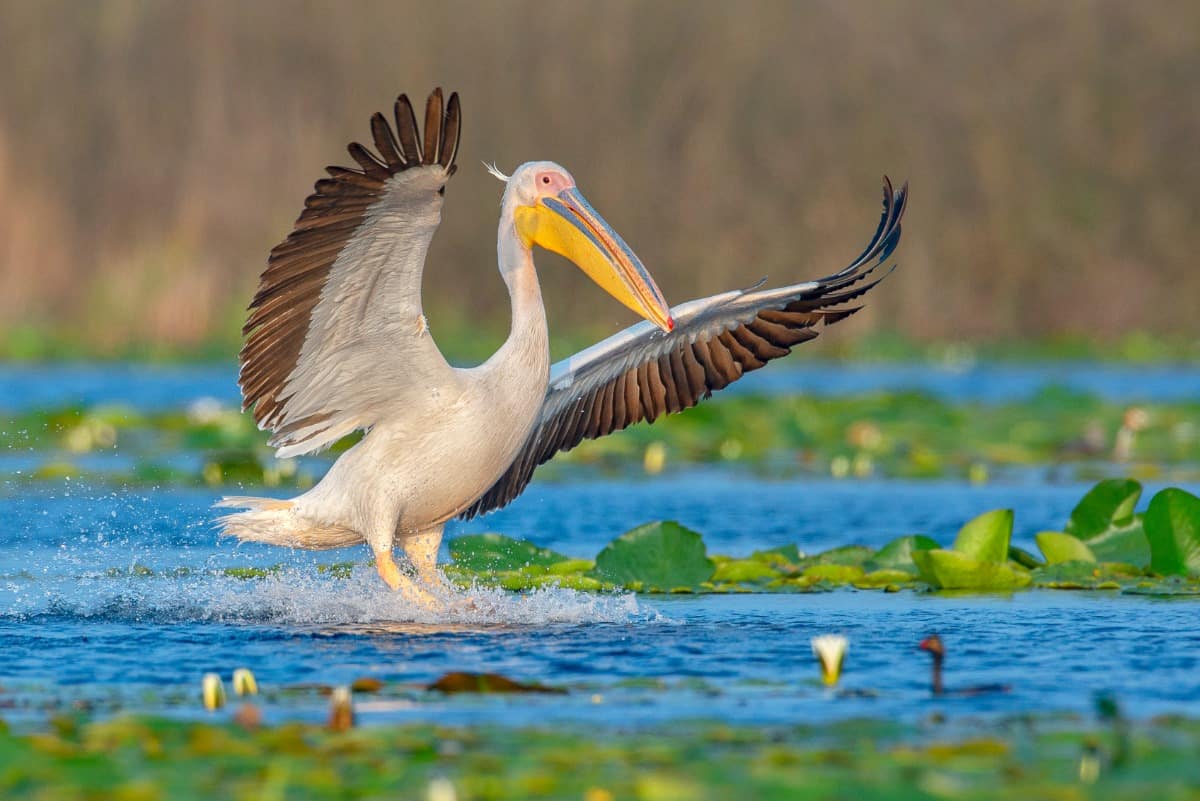
Also known as the eastern white pelican, the rosy pelican, or simply as the white pelican, this bird has a wingspan of up to 3.6 meters long. This makes it second to the wandering albatross when it comes to wingspan. Their wingspan helps them fly long distances, as shown by their migratory patterns. White pelicans in Eurasia range in the seasons between Eastern Europe, Central Asia, and Northern China. In Africa, they populate the entire continent.
Its name also reflects its predominantly white coloration, except for its wing feathers, which feature a black coloration instead. The bird also has a multicolored bill and yellow legs, which stand out against its white feathers. Surprisingly, despite having a Least Concern conservation status, the white pelican enjoys protected status in the European Union.
Southern Royal Albatross – 3.5 meters

This bird has a wingspan of 3.5 meters, less than its cousin the wandering albatross, but longer than other albatross species. The southern royal albatross also features a predominantly white color but has black speckles on its mantle. Its wing feathers also have a black or dark brown color, while also having white speckles.
Despite their long wingspans, this bird has a surprisingly small range, typically staying within 30°S and 45°S. They also primarily nest on Campbell Island, although they also have a presence on Adams Island, Auckland Island, as well as New Zealand’s Otago Peninsula. That said, outliers of the species do fly long distances, traveling as far away as South America.
Dalmatian Pelican – 3.5 meters

With a wingspan of 3.5 meters, it rivals the southern royal albatross, while also having the distinction of being the world’s largest freshwater bird. They have a vast range, stretching from Europe in the west to China in the east, and from Russia in the north to India in the south. Compared to the white pelican, Dalmatian pelicans feature silver feathers that may appear a solid gray in flight. Males of the species may also molt before winter, gaining white feathers that darken by spring. Before the feathers darken, though, the white feathers make them near-indistinguishable from white pelicans.
Dalmatian pelicans currently have a Near-Threatened conservation status because of human development. While the species’ core population in Russia has maintained a stable population, smaller colonies such as those in Mongolia currently stand at risk of extinction in the near future.
Amsterdam Albatross – 3.4 meters
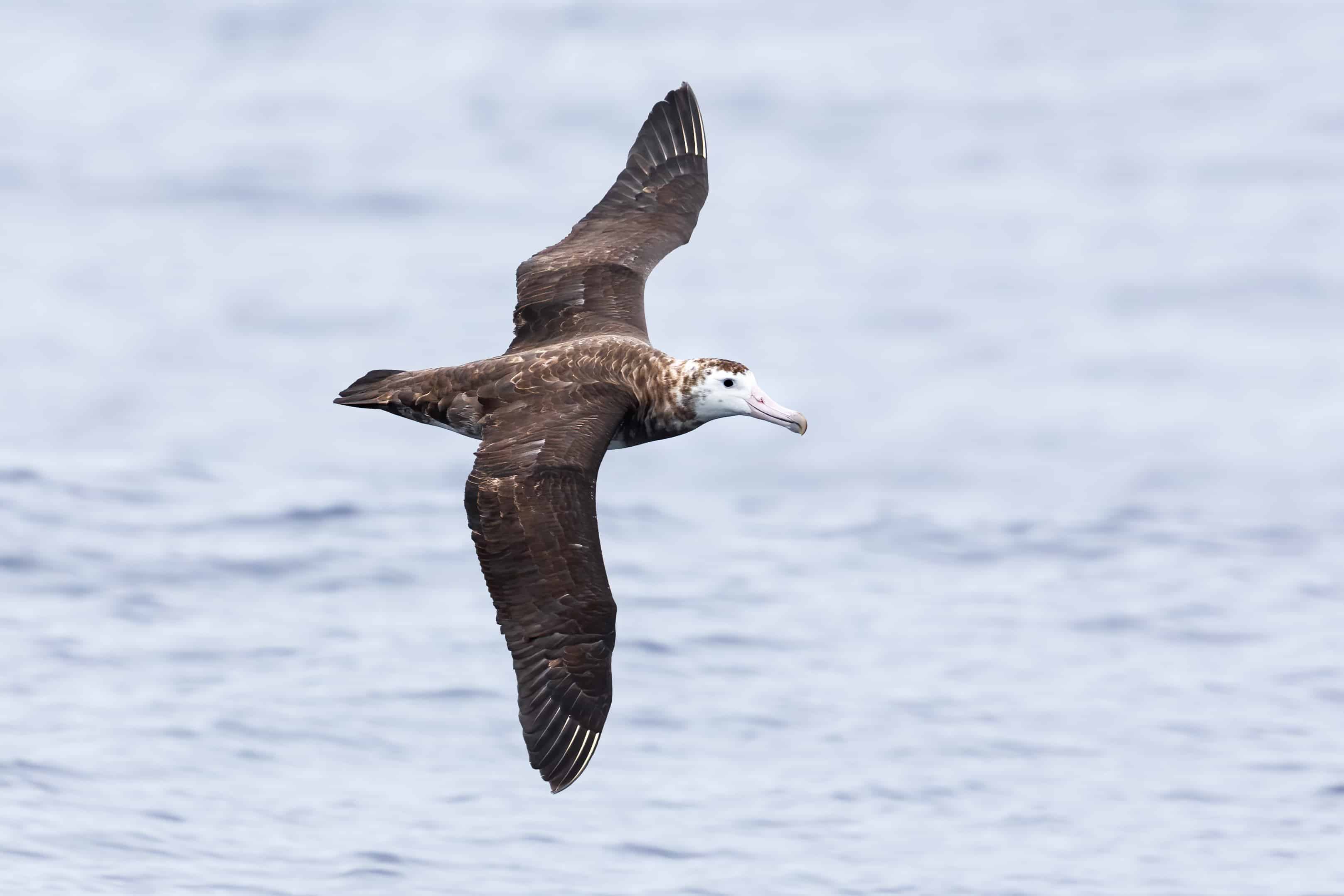
Despite its name, this bird isn’t named after the city of Amsterdam in the Netherlands. Instead, its name refers to Amsterdam Island in the Indian Ocean, the one place in the world where this bird breeds at. Similar to the Tristan albatross, scientists originally saw the Amsterdam albatross as just outliers of the wandering albatross.
However, detailed physical studies saw the Amsterdam albatross recognized as its own species in 1983. This proved controversial at the time, although the controversy died down in the 1990s thanks to genetic studies further proving the bird’s distinctiveness. The Amsterdam albatross particularly stands out among its fellow albatrosses thanks to its brown feathers. It also has a wingspan of 3.4 meters at most, allowing it to range across the entire Indian Ocean. This has also made its dependence on Amsterdam Island for breeding a mystery, given the bird’s ability to travel long distances.
Andean Condor – 3.3 meters
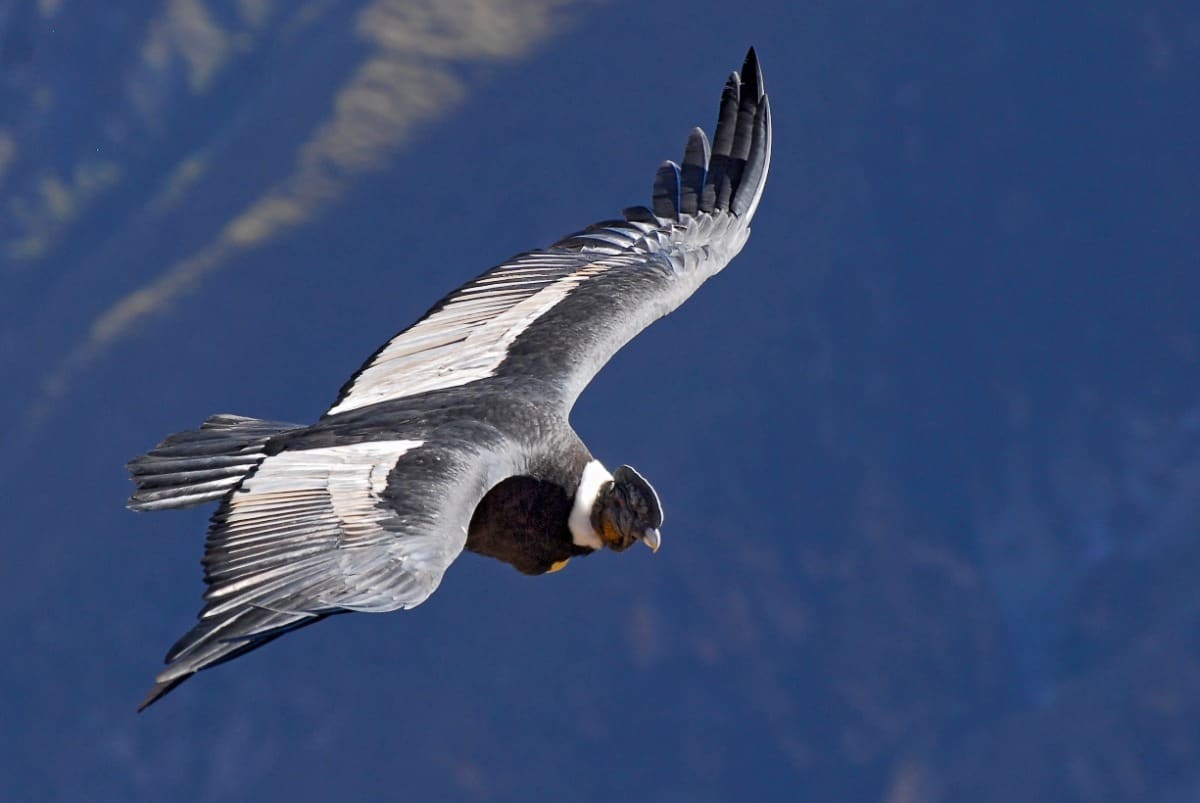
With a wingspan of 3.3 meters, this bird stands as the largest bird of prey in the whole world. The Andean condor has a predominantly black color, with the exception of the base of its neck, which has white feathers instead. Its wings may also have white patches on them while having a completely bald head and neck. The bird’s skin normally has a dull red color, but this can vary depending on the bird’s emotional state.
The Andean condor also has one of the longest lifespans among birds, able to live up to 70 years. It also ranges across the entire west coast of South America, following the course of its native Andes Mountains. Together with its predatory disposition, this made the bird the national symbol of various countries in the region. These include Bolivia, Chile, Colombia, Ecuador, and Peru. Ironically, the bird currently has a Vulnerable conservation status as a result of human development in the Andes Mountains.
Cinereous Vulture – 3.1 meters

Also known as the black vulture, the monk vulture, or the Eurasian vulture, this bird has a wingspan of 3.1 meters. Its name references its color, as cinereous means ash-colored in Latin. Adults of the species, though, have paler feathers on their heads.
Like other birds with long wingspans, the cinereous vulture has a very wide range. Most of the birds today range across Asia from Turkey in the west to China in the east, and from Russia in the north to India in the south. A number of birds also still live in Southern Europe, but have since become cut off from their fellows in Asia. This resulted from the species’ extinction in Eastern Europe due to human development over the last 200 years. This led to the cinereous vulture receiving a Near Threatened conservation status.
Himalayan Vulture – 3.1 meters
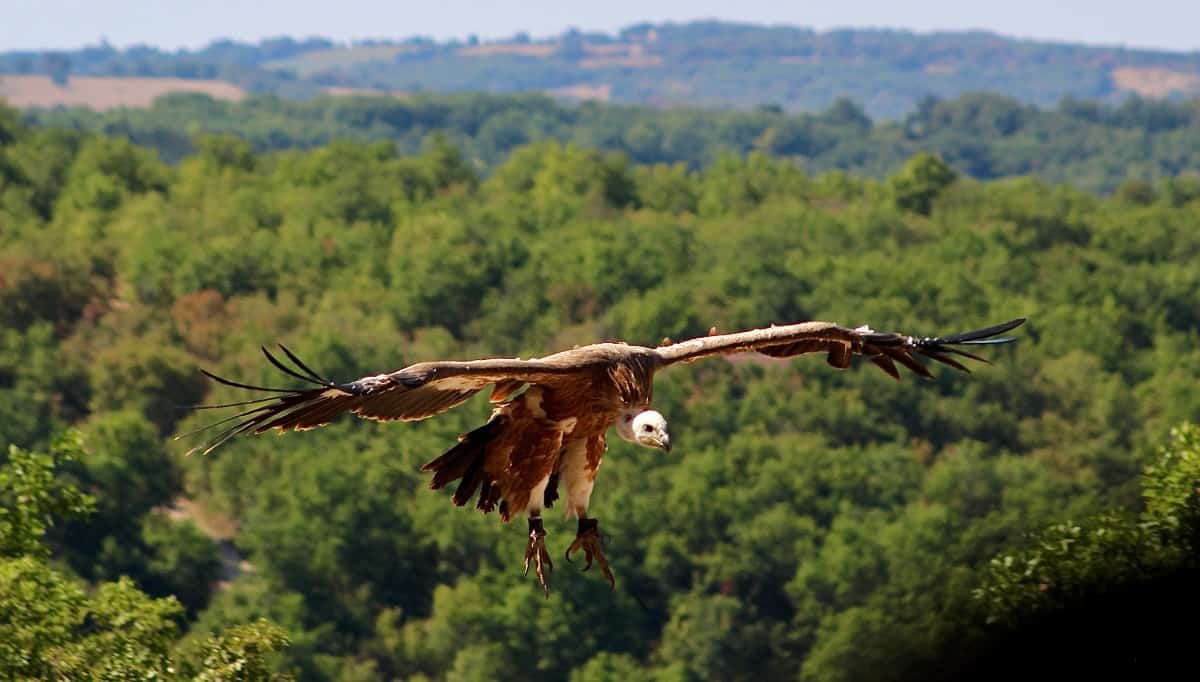
This bird has a wingspan of 3.1 meters, which helps it fly in the high altitudes of its native Himalayas. They’ve also spread beyond their native mountains, with small populations of Himalayan vultures living in Central and even Southeast Asia. That said, they prefer to nest in high altitudes, with scientists noting the Himalayan vulture never builds nests below 1.22 km above sea level.
The largest and heaviest birds in the Himalayas, they predominantly have a dark brown color. However, their secondary wing feathers typically have a paler color, while their leg feathers can vary from green, gray, and pale brown. Juveniles also have pale feathers on their head, which darken slightly as they grow into adulthood.
Tristan Albatross – 3.05 meters
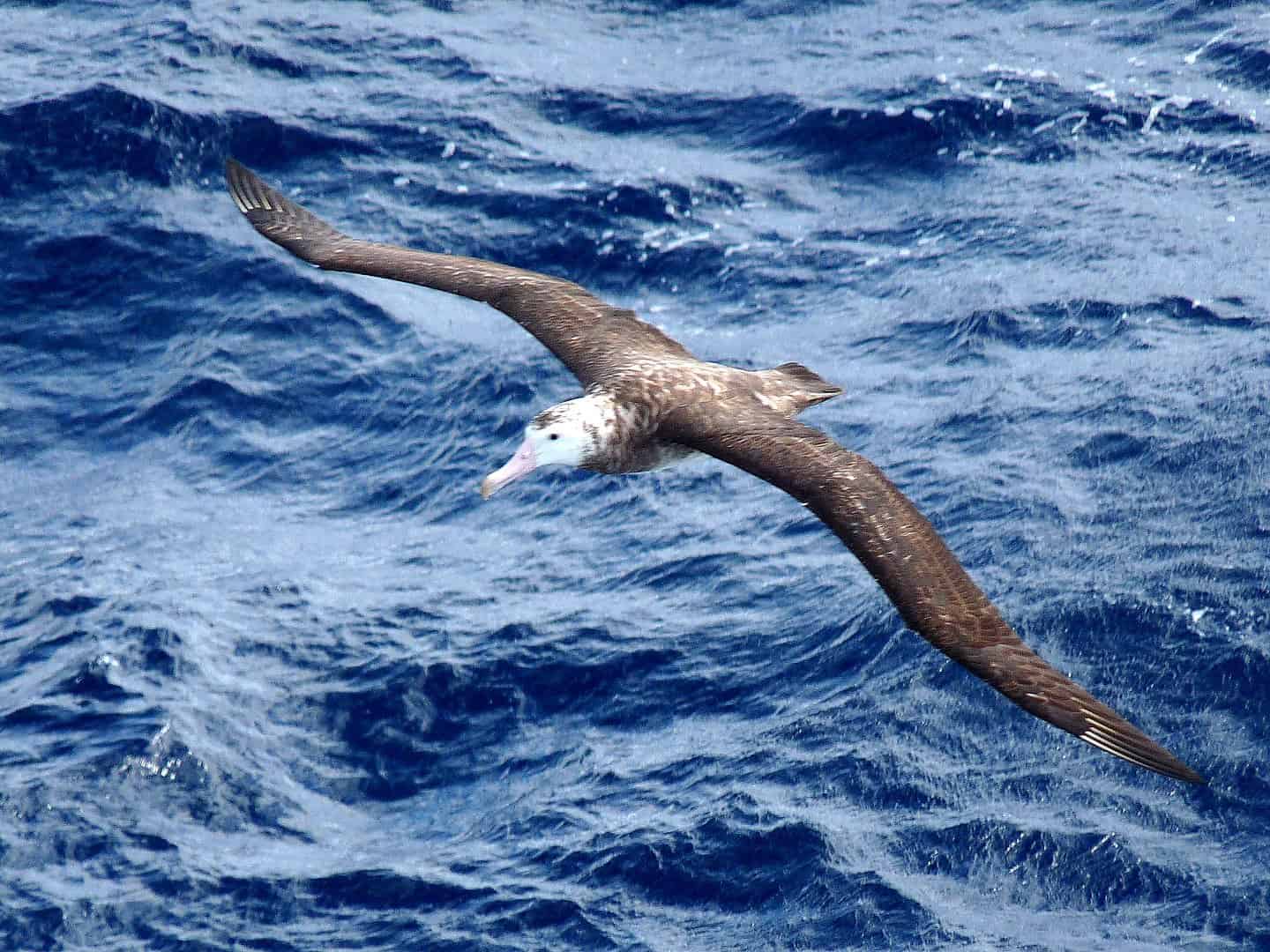
Scientists originally considered specimens of this species as random outliers of the wandering albatross. In particular, they featured dark-colored feathers on their back, as well as shorter wingspans of only around 3.05 meters. Until 1998, scientists didn’t think this served as enough evidence for the Tristan albatross to count as their own species.
In that year, however, genetic studies led scientists to designate the Tristan albatross as separate from the wandering albatross. That said, not all scientific organizations support this, with some such as the American Ornithological Society still considering the issue before making a final decision. Despite its smaller wingspan compared to the wandering albatross, the Tristan albatross still has a wide range around the world. Scientists have traced the birds flying around the Southern Hemisphere, from South America to Africa, or in the opposite direction to Australia.
Northern Royal Albatross – 3.05 meters
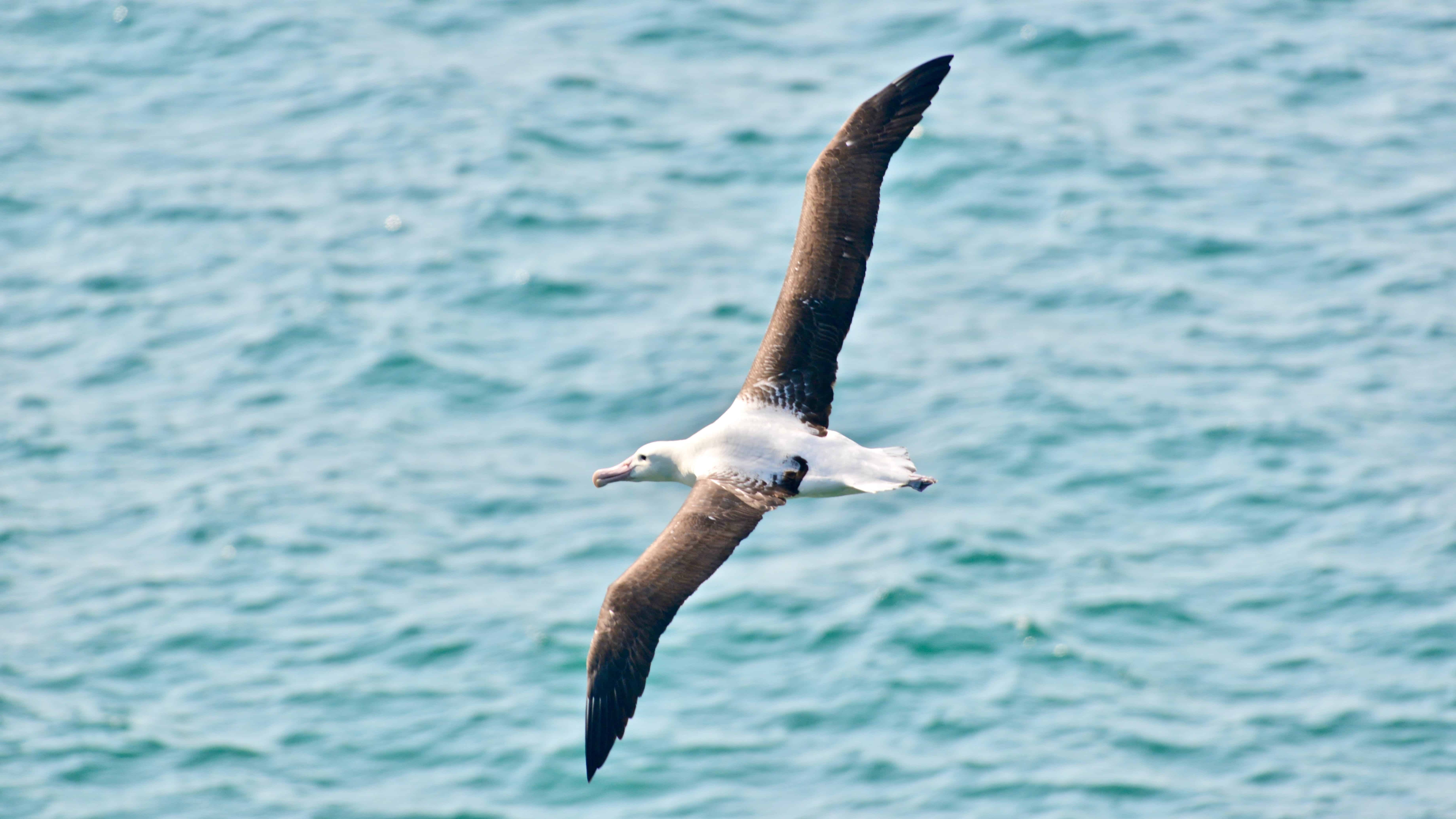
Also simply known as the royal albatross, or as the toroa, this bird has a wingspan of around 3.05 meters. Its body features white feathers, along with black speckles that grow in number further down the bird’s body towards its tail. Its wings, though, have black or dark brown feathers, with the upper wing feathers having white speckles. Royal albatrosses also grow lighter in color the older they get, but they never turn fully white.
Despite their name, though, the northern royal albatrosses still live in the Southern Hemisphere. Royal albatrosses nest in New Zealand, but outside the mating season, prefer to spend their time off the Pacific coast of South America.
Antipodean Albatross – 3 meters
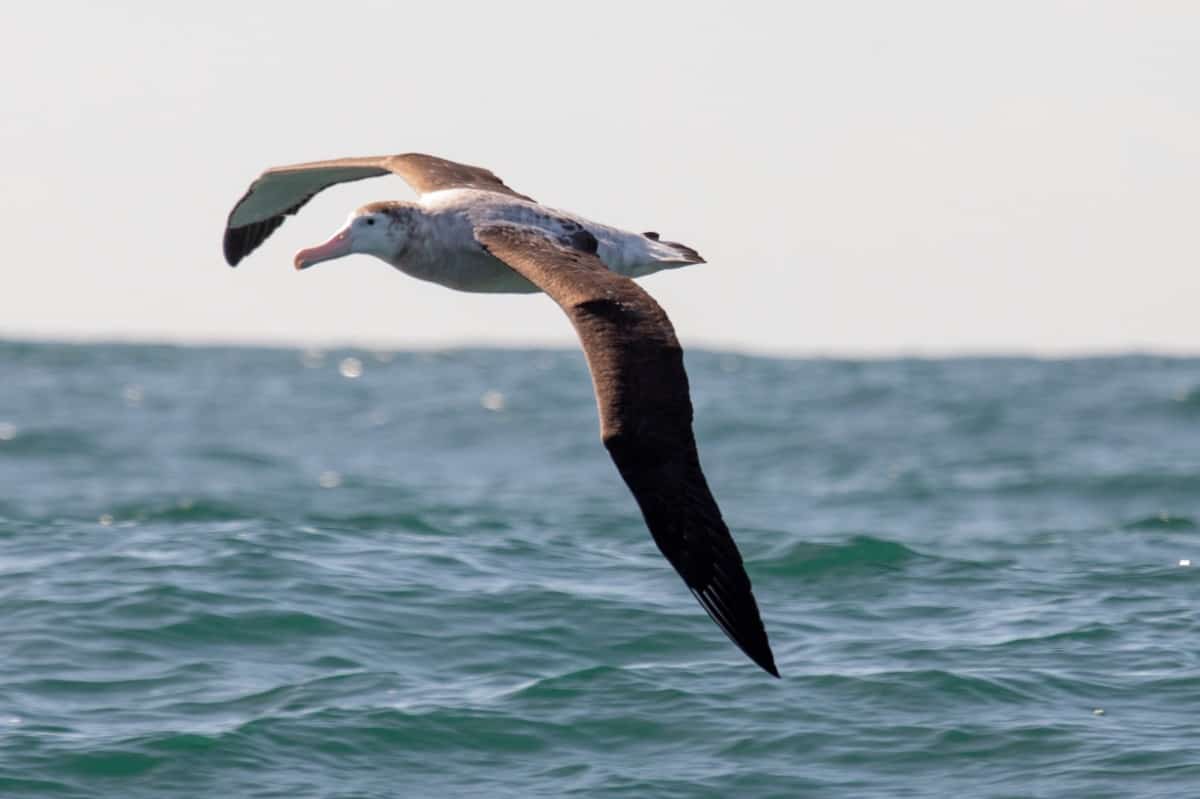
This bird has a wingspan of 3 meters, allowing it to range across the South Pacific, between Australia and South America. Juveniles of the species prove especially difficult to distinguish from those of the wandering albatross. This results from their similar size, as well as brown coloration. Unlike the wandering albatross, though, Antipodean albatrosses retain their dark coloration into adulthood.
Scientists also originally designated it as a sub-species of the wandering albatross in 1992. Further genetic studies led them to designate it as a separate species in 1998, a decision not supported by all international organizations.
The Antipodean albatross currently counts as an endangered species thanks to human development, but with a unique twist. Specifically, humans keeping cats as pets or letting them become feral in the wild has impacted the bird’s population. In particular, cats feed on hatchlings and even smaller juveniles. Pigs raised for food and left to forage in the wild may also destroy nests and kill hatchlings.
California Condor – 3 meters
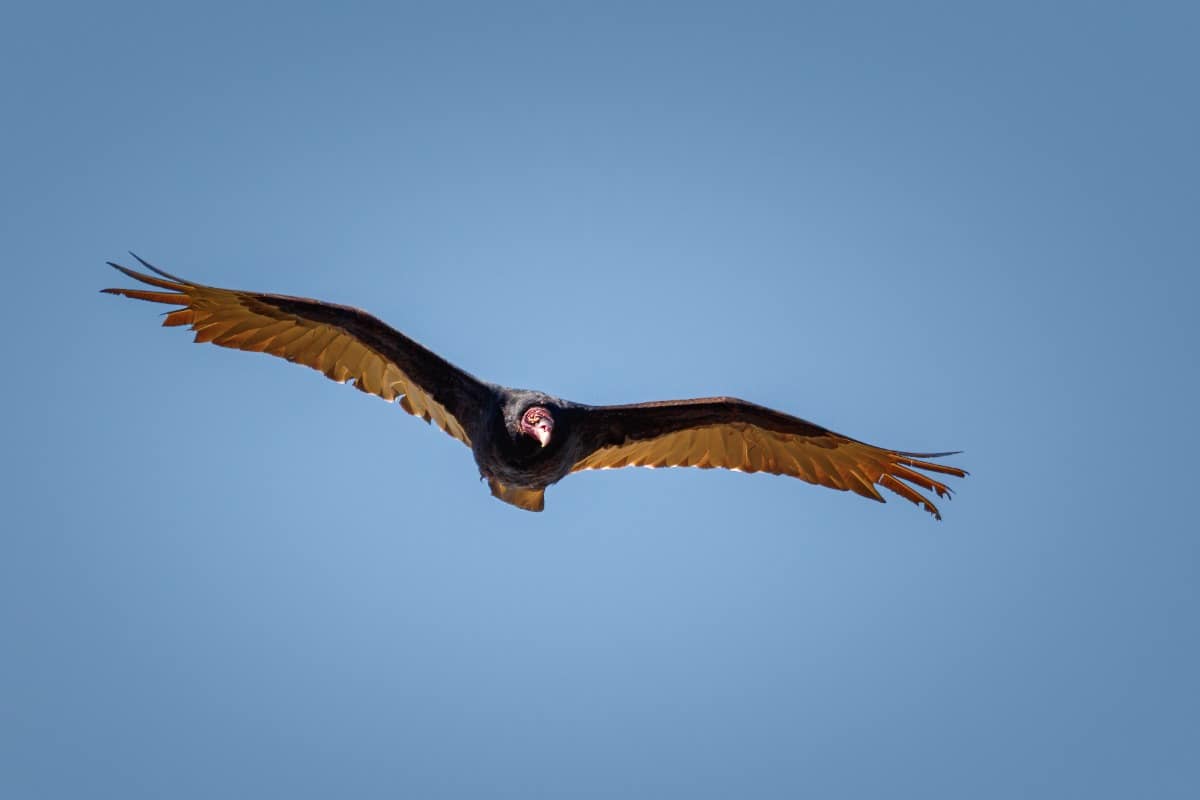
With a wingspan of 3 meters, this bird has the longest wingspan out of any bird in North America. The California condor has a predominantly black color, although it may feature white bands under its wings. It also has a bald head and neck, the skin of which flushes with the bird’s emotional state. Sadly, it’s also critically endangered and even went extinct in the wild back in 1987.
This resulted from the loss of its habitats to human development, as well as the widespread adoption of synthetic pesticides after WWII. Today, though, a combination of legal protections, careful breeding programs, and reintroduction to the wild has allowed the California condor to recover. Small populations of the bird now live in the coastal mountains of its native California, as well as parts of Arizona and Utah.
Nubian Vulture – 2.9 meters
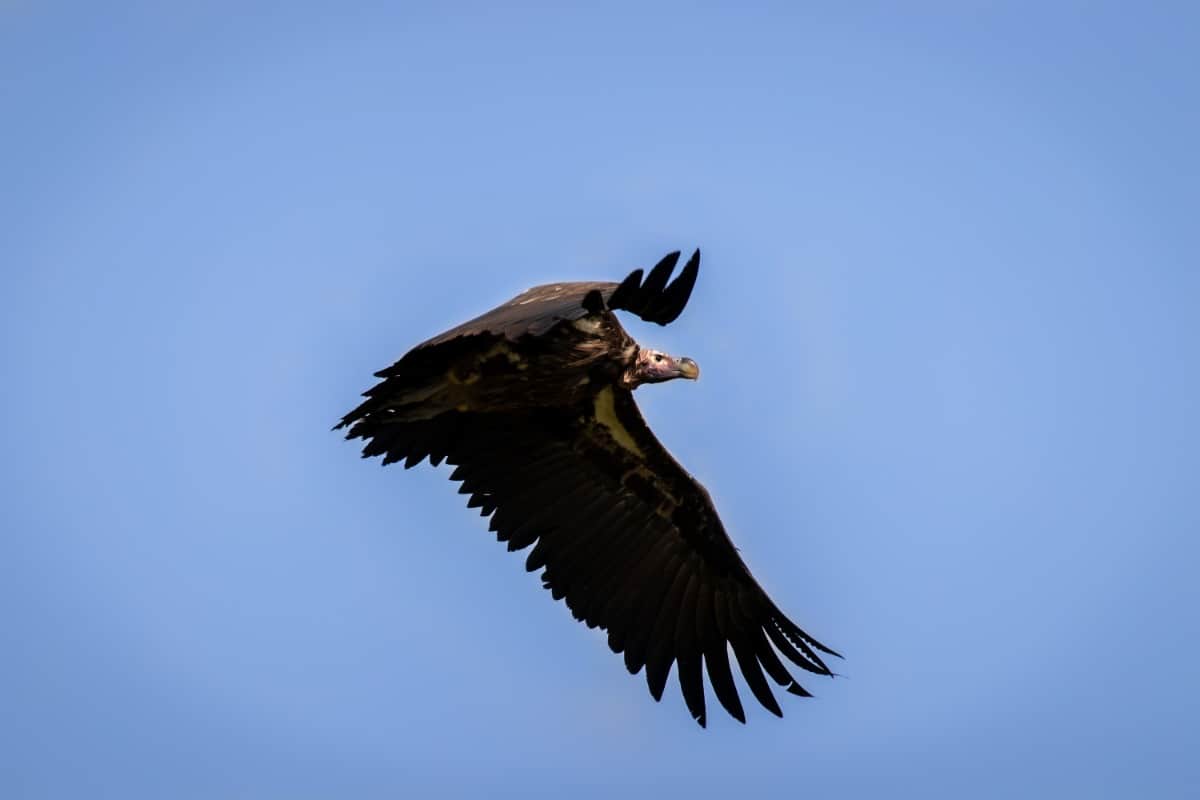
Also known as the lappet-faced vulture, this bird has a wingspan of 2.9 meters. This gives it the second-longest wingspan among vultures after the cinereous vulture. Nubian vultures have a predominantly black color but feature distinctive white feathers on their thighs.
That said, scientists have noted some variation in color depending on where a particular specimen lives. Birds from Africa have brown edges on their feathers, while Asian birds may have brown instead of black feathers. Nubian vultures also have bald heads, but the skin color also varies depending on location. African specimens have red skin, while Arabian specimens have pink skin with gray patches.
Today, the Nubian vulture counts as an endangered species, primarily thanks to human development. It’s even gone extinct in some places in its native range, such as in Israel.
Wedge-Tailed Eagle – 2.84 meters
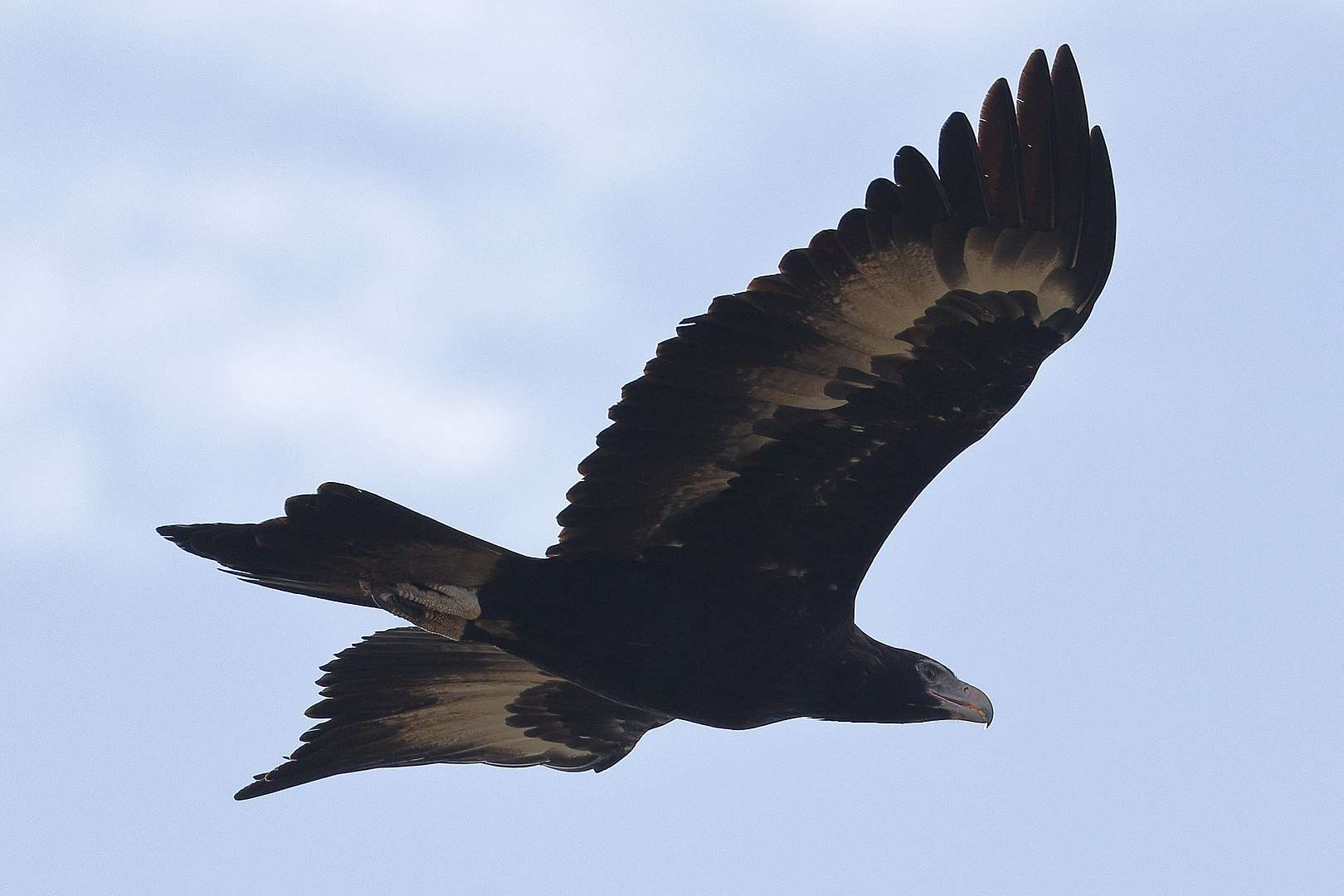
The largest bird in Australia, the wedge-tailed eagle has a wingspan of 2.84 meters. It lives across the entire continent, whether in the moist coastal regions, the cold and dry mountains, or the hot and arid interior. It’s also one of the most successful predators in the world and serves a vital role in keeping invasive mammal species like the European rabbit in check. Unsurprisingly, this also makes the wedge-tailed eagle an animal of Least Concern when it comes to conservation.
The bird typically has a predominantly black color, although scientists have documented dark brown or brown specimens. Juveniles also tend to have light brown feathers that only darken as they age into adulthood. Wedge-tailed eagles also have distinctively large bills but small heads, as well as unusually-large wing bones. It also takes them a long time to molt, with scientists noting it taking up to three years before a wedge-tailed eagle fully replaces its coat.
Bearded Vulture – 2.83 meters
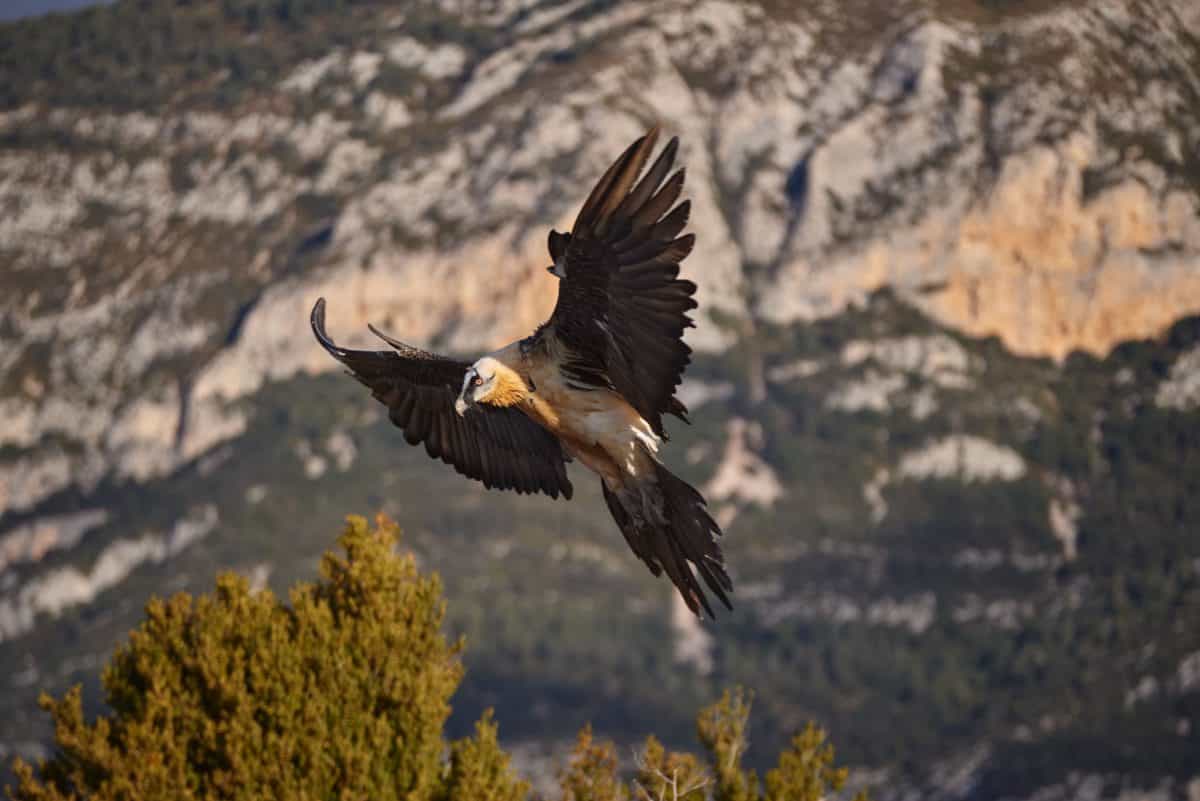
This bird with a wingspan of up to 2.83 meters was given its name by Carl Linneus in 1758. He noted how, unlike other vultures, the bearded vulture doesn’t have a bald head. The name he gave is also a reference to the beard-like tuft of black feathers under the bird’s beak. The rest of its head features white feathers, while the rest of its body may have dark gray or rust-colored feathers.
Bearded vultures also have other distinctive characteristics, such as their largely-silent behavior. Scientists have observed the bird as only making noises when looking for a mate or trying to scare interlopers away from their nests. The bearded vulture also has the distinction of being the only vertebrate to feed almost completely on bone. In fact, scientists estimate that bones make up to 90% of the bird’s diet.
Today, the bearded vulture has scattered populations across Africa, Southern Europe, the Caucasus Mountains, and South Asia. Human development has also heavily impacted its habitats, giving the species a Near Threatened conservation status.
Jabiru Stork – 2.8 meters

Also known simply as the Jabiru, this bird has a wingspan of 2.8 meters, making it the bird with the second-longest wingspan in South America. The Jabiru has a mostly white color but has a bald head and neck with mostly black skin. The base of its neck, though, has a red-colored pouch for storing food and attracting mates. This serves as the origin of its name, with “jabiru” meaning “swollen neck” in the Tupi-Guarani language.
Scientists have noted similarities in the Jabiru’s appearance with other stork species from Asia and Africa. This has led them to think that the Jabiru’s ancestors originally came from the Old World. At some point in the past, they migrated to the New World, where evolution turned them into an entirely different species. Today, the Jabiru has a widespread population across South America, making it a species of Least Concern.
Kori Bustard – 2.75 meters

This bird has a wingspan of 2.75 meters, making it the largest flying bird in Africa. Scientists also think that males of the species make up the heaviest flight-capable animals in the world. Kori bustards typically have feathers with a mixed coloration of gray and brown, with fine patterns in black and white.
English naturalist William Burchell gave the bird its name in 1822, transliterating it from the original Tswana name Kgori. Today, the bird lives widespread across Southern Africa, where it suffers a declining population as a result of overhunting. Once a vulnerable species, the introduction of legal protections has allowed the species to recover. That said, they remain a near-threatened species, thanks to the difficulty of actually enforcing the bird’s legal protections.
Trumpeter Swan – 2.5 meters
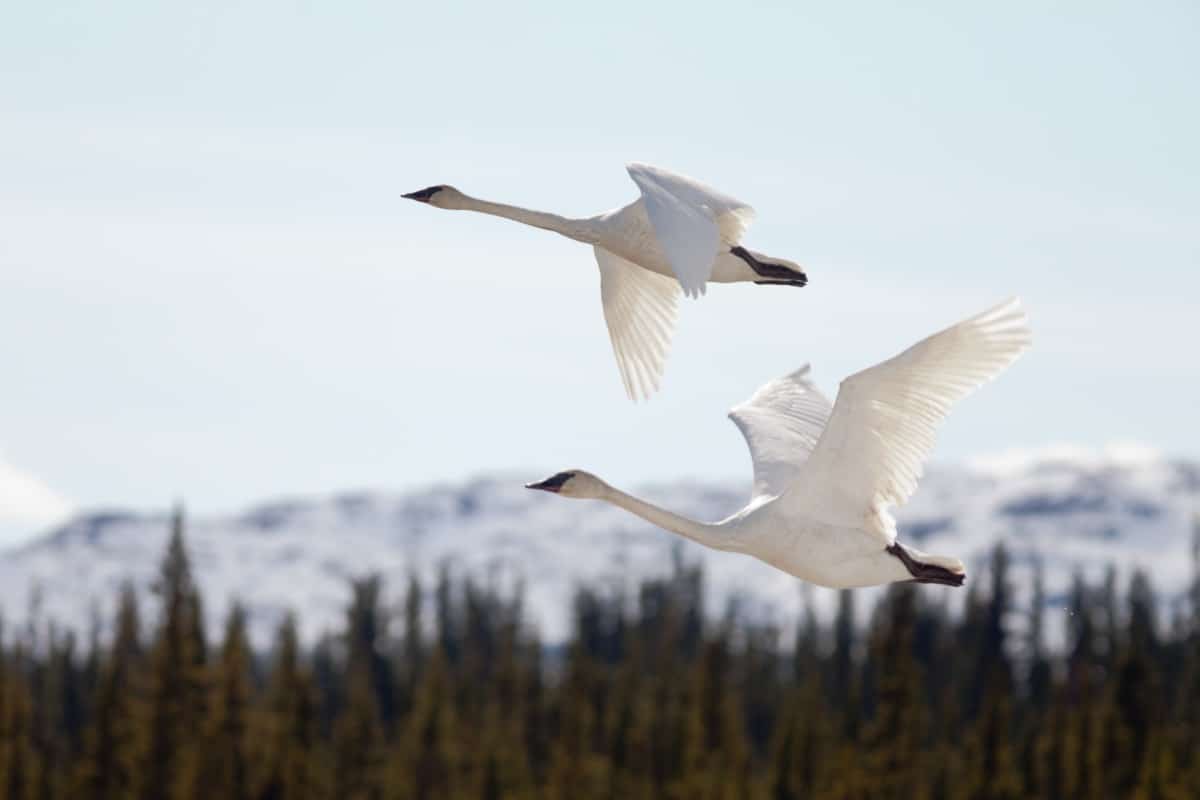
The heaviest birds in North America, these birds have a wingspan of up to 2.5 meters. Their name references their loud and distinctive calls, which resemble that of a trumpet. Like most swans, they have a pure white color in adulthood, while their young have a gray color that whitens as they grow older. This makes it difficult to distinguish them from other swans at a distance, although scientists admit a trumpeter swan’s greater size makes for a good rule of thumb.
Trumpeter swans also have the unfortunate distinction of having previously made a brush with extinction. Overhunting of the species reduced their wild population to just 70 birds by 1933. However, the introduction of legal protections, and carefully managed breeding and reintroduction into the wild have caused the trumpeter swan to rebound. Today, scientists estimate their wild population at 70,000 birds, allowing the trumpeter swan to comfortably have a Least Concern conservation status.
Goliath Heron – 2.3 meters
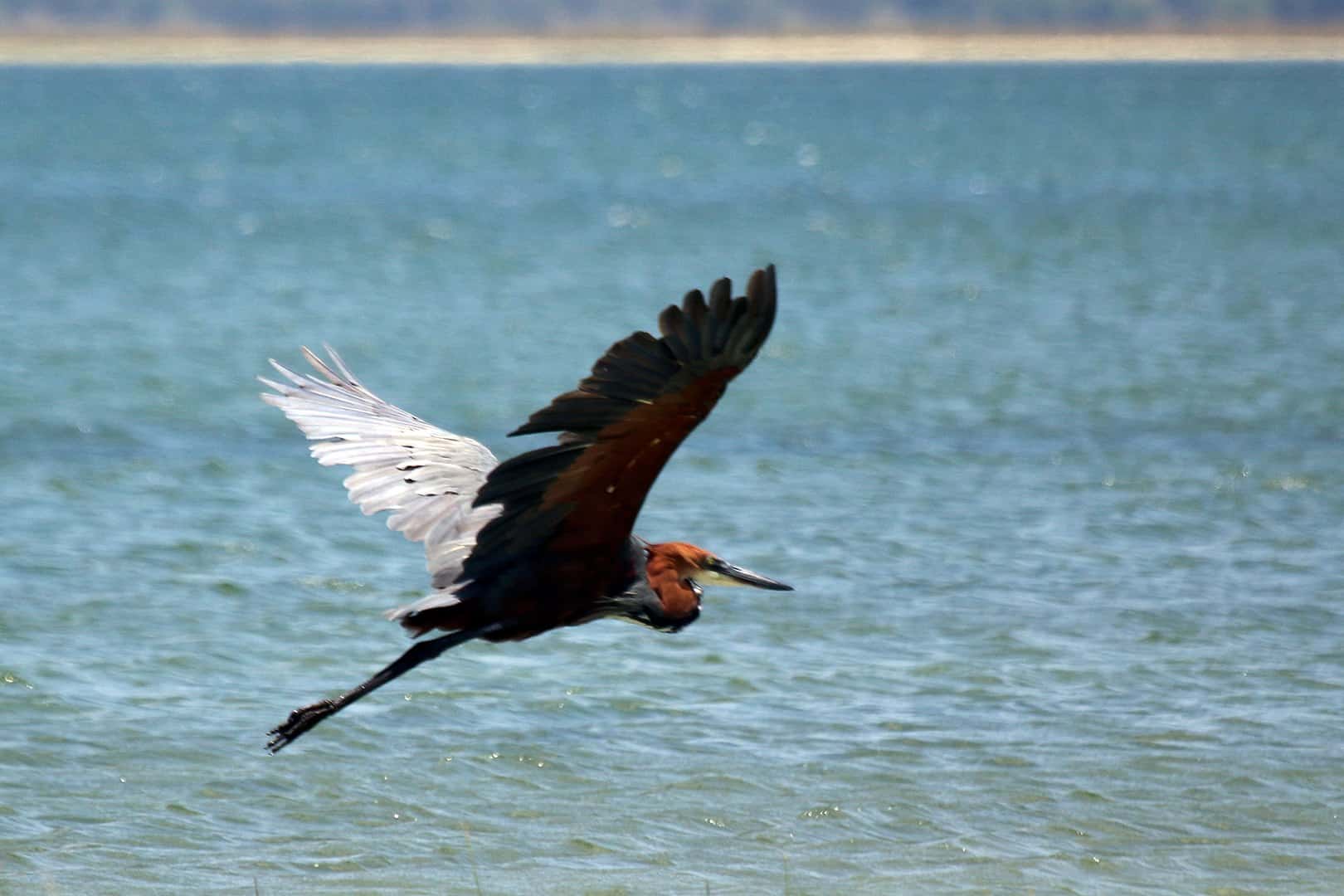
Also known as the giant heron, this bird has a wingspan of up to 2.3 meters, making it the world’s largest heron. The bird has a very colorful appearance, with a mix of slate gray and chestnut brown feathers over most of its body. White feathers cover its chin, neck, and upper breast, while black streaks mark its belly and lower breast. Goliath herons also make loud, bark-like noises, which can stay audible as far as 2 km away.
Scientists find this bird very aquatic, even among its fellow herons, with the Goliath heron only ever leaving the water when absolutely necessary. Even then, it prefers to fly over water than over land. Surprisingly, though, the birds can nest in high altitudes of up to 2.1 km above sea level, so long as there’s enough water for their comfort. The bird mostly lives in sub-Saharan Africa today, but once had large populations in South and Southeast Asia. However, human development has since caused the bird’s Asian population to steadily decline.
Was this page helpful?
Our commitment to delivering trustworthy and engaging content is at the heart of what we do. Each fact on our site is contributed by real users like you, bringing a wealth of diverse insights and information. To ensure the highest standards of accuracy and reliability, our dedicated editors meticulously review each submission. This process guarantees that the facts we share are not only fascinating but also credible. Trust in our commitment to quality and authenticity as you explore and learn with us.


